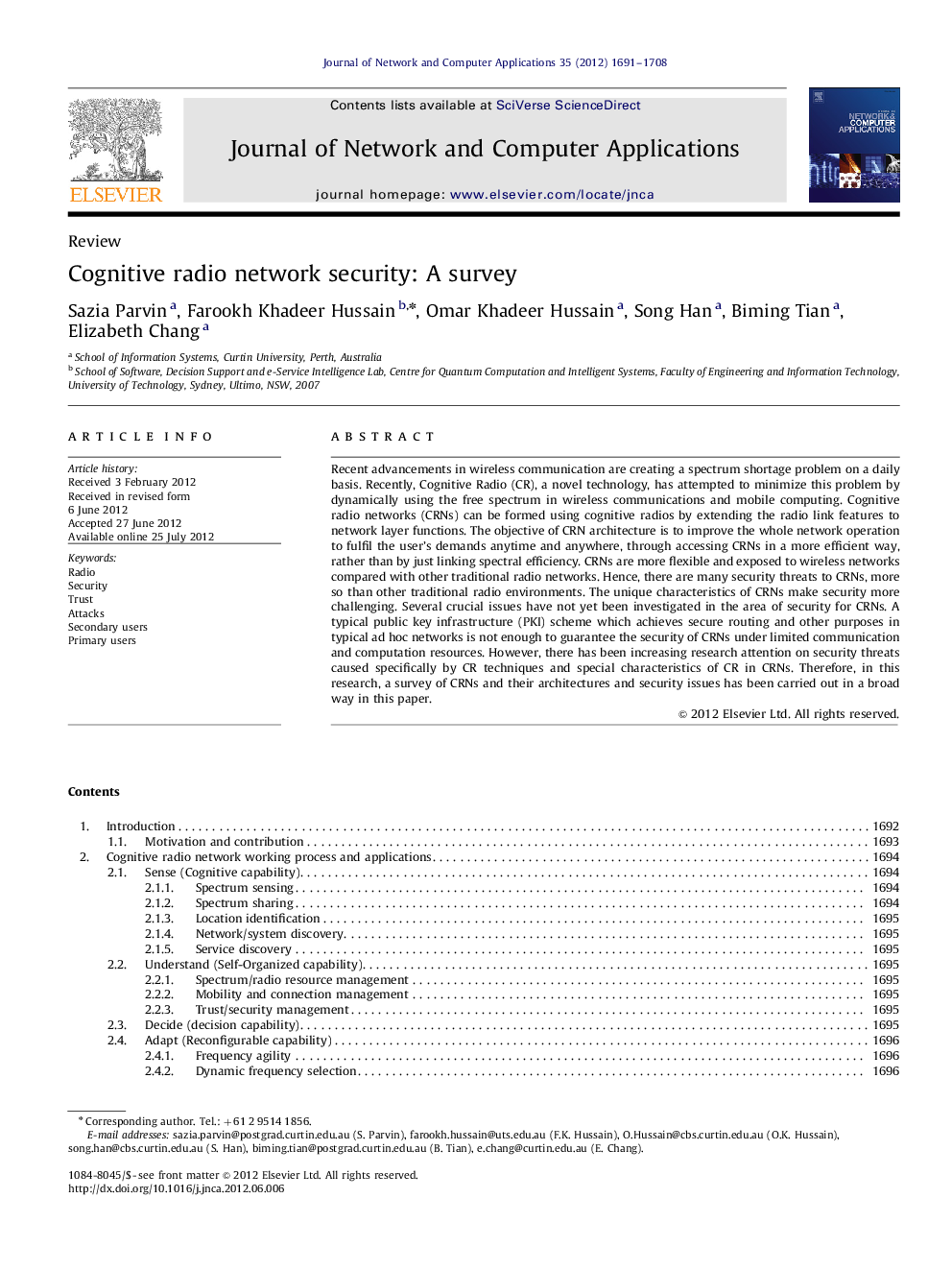| Article ID | Journal | Published Year | Pages | File Type |
|---|---|---|---|---|
| 459406 | Journal of Network and Computer Applications | 2012 | 18 Pages |
Recent advancements in wireless communication are creating a spectrum shortage problem on a daily basis. Recently, Cognitive Radio (CR), a novel technology, has attempted to minimize this problem by dynamically using the free spectrum in wireless communications and mobile computing. Cognitive radio networks (CRNs) can be formed using cognitive radios by extending the radio link features to network layer functions. The objective of CRN architecture is to improve the whole network operation to fulfil the user's demands anytime and anywhere, through accessing CRNs in a more efficient way, rather than by just linking spectral efficiency. CRNs are more flexible and exposed to wireless networks compared with other traditional radio networks. Hence, there are many security threats to CRNs, more so than other traditional radio environments. The unique characteristics of CRNs make security more challenging. Several crucial issues have not yet been investigated in the area of security for CRNs. A typical public key infrastructure (PKI) scheme which achieves secure routing and other purposes in typical ad hoc networks is not enough to guarantee the security of CRNs under limited communication and computation resources. However, there has been increasing research attention on security threats caused specifically by CR techniques and special characteristics of CR in CRNs. Therefore, in this research, a survey of CRNs and their architectures and security issues has been carried out in a broad way in this paper.
